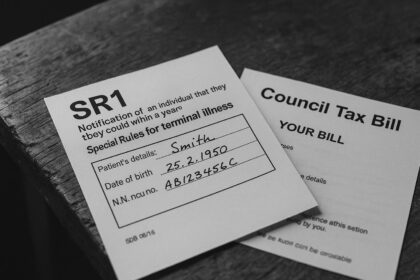New research from the Norwegian University of Science and Technology reveals that JAK inhibitors, while effective against chronic inflammation, may increase patients’ susceptibility to viral infections by suppressing key immune responses, urging careful evaluation of treatment risks.
A class of anti-inflammatory medications known as Janus kinase (JAK) inhibitors, widely prescribed for conditions such as rheumatoid arthritis, eczema, and alopecia, has come under scrutiny following new research from the Norwegian University of Science and Technology (NTNU). This study indicates that, rather than solely alleviating discomfort, these drugs may inadvertently render patients more susceptible to viral infections, suggesting a complex balance between treating inflammation and compromising immune function.
JAK inhibitors operate by inhibiting specific proteins in the immune system that trigger inflammation, a feature that has made them invaluable for managing chronic inflammatory conditions. The introduction of these drugs, with the first major inhibitor, Jakafi, receiving FDA approval in 2011, marked a significant milestone in therapeutic interventions. However, the research illuminates a critical drawback: the same mechanism that provides relief from inflammatory symptoms may also suppress crucial immune responses, enabling viruses such as influenza and potentially COVID-19 to penetrate more easily and replicate within the body.
The researchers at NTNU found that medications including baricitinib, marketed as Olumiant for alopecia treatment, slow down the gene responses essential for countering viral infections. Aleksandr Ianevski, a researcher involved in the study, remarked, “These genes play a crucial role in the body’s response to viral infections.” The suppression of the immune pathway can weaken the body’s natural defence, effectively eroding its “antiviral shield.” This could have severe implications during times of viral outbreaks, leading to an increased risk of severe infections.
Supporting these findings, a systematic review published in the Journal of the American Academy of Dermatology highlights that JAK inhibitors are associated with a significantly elevated risk of infections. Researchers noted a relative risk increase of 39% across all indications, which rises to 46% for dermatological conditions. The review exposed a troubling trend: patients receiving this treatment are more prone to severe infections, including herpes zoster, respiratory infections, and even urinary tract infections.
Erlend Ravlo, a PhD research fellow at NTNU, echoed the need for caution, stating, “Although JAK inhibitors are effective in the treatment of inflammation, this shows that they can pose a hidden risk for patients with latent or active viral infections.” The findings underline the importance of vigilant prescribing practices among healthcare professionals, especially when treating vulnerable populations such as the elderly or those with existing health issues.
Despite these risks, the immunosuppressive nature of JAK inhibitors could find a place in controlled environments, such as in vaccine development or antiviral drug screening processes. Ianevski advocates for further research to optimise the use of these drugs, particularly during pandemic situations, to ensure patient safety without compromising the effectiveness of treatment.
As awareness of these potentially severe side effects grows, it becomes increasingly important for both doctors and patients to weigh the benefits against the risks. Common side effects of JAK inhibitors include headaches and nausea, but the more serious complications—from pneumonia to significant changes in blood cell counts—highlight the need for meticulous monitoring.
In conclusion, while JAK inhibitors provide significant therapeutic benefits for managing chronic inflammatory disorders, their impact on immune response presents a nuanced challenge that requires careful consideration and further investigation to protect patient health in an increasingly complex medical landscape.
 Reference Map:
Reference Map:
- Paragraph 1 – [1]
- Paragraph 2 – [1], [2]
- Paragraph 3 – [3], [2]
- Paragraph 4 – [2], [3]
- Paragraph 5 – [1], [3]
- Paragraph 6 – [1], [2]
- Paragraph 7 – [1], [2]
Source: Noah Wire Services
- https://www.dailymail.co.uk/health/article-14754417/anti-inflammatory-drugs-risk-deadly-viral-infections-jakinhibitors.html?ns_mchannel=rss&ns_campaign=1490&ito=1490 – Please view link – unable to able to access data
- https://pubmed.ncbi.nlm.nih.gov/39717054/ – A systematic review and meta-analysis published in the Journal of the American Academy of Dermatology examined the risk of infections during treatment with oral Janus kinase (JAK) inhibitors compared to placebo. The study found that JAK inhibitors were associated with a significantly increased risk of infections across all indications, with a relative risk of 1.39. In dermatologic indications, the relative risk was 1.46, and an increased risk of herpes zoster infections was observed in these cases. The authors concluded that JAK inhibitors pose a higher risk of infections compared to placebo, particularly in dermatologic conditions.
- https://www.sciencedirect.com/science/article/pii/S2666534024000190 – An article in the Journal of Dermatological Treatment discusses the infection risks associated with Janus kinase (JAK) inhibitors. It highlights that JAK inhibitors have been linked to an increased risk of infections, including respiratory and urinary tract infections, nasopharyngeal infections, and skin infections. The risk is dose-dependent and similar to that seen with biologic therapies. The article emphasizes the importance of screening for varicella exposure and vaccination in appropriate cohorts to mitigate the risk of herpes zoster reactivation.
- https://www.sciencedirect.com/science/article/pii/S2666534024000190 – An article in the Journal of Dermatological Treatment discusses the infection risks associated with Janus kinase (JAK) inhibitors. It highlights that JAK inhibitors have been linked to an increased risk of infections, including respiratory and urinary tract infections, nasopharyngeal infections, and skin infections. The risk is dose-dependent and similar to that seen with biologic therapies. The article emphasizes the importance of screening for varicella exposure and vaccination in appropriate cohorts to mitigate the risk of herpes zoster reactivation.
- https://www.sciencedirect.com/science/article/pii/S2666534024000190 – An article in the Journal of Dermatological Treatment discusses the infection risks associated with Janus kinase (JAK) inhibitors. It highlights that JAK inhibitors have been linked to an increased risk of infections, including respiratory and urinary tract infections, nasopharyngeal infections, and skin infections. The risk is dose-dependent and similar to that seen with biologic therapies. The article emphasizes the importance of screening for varicella exposure and vaccination in appropriate cohorts to mitigate the risk of herpes zoster reactivation.
- https://www.sciencedirect.com/science/article/pii/S2666534024000190 – An article in the Journal of Dermatological Treatment discusses the infection risks associated with Janus kinase (JAK) inhibitors. It highlights that JAK inhibitors have been linked to an increased risk of infections, including respiratory and urinary tract infections, nasopharyngeal infections, and skin infections. The risk is dose-dependent and similar to that seen with biologic therapies. The article emphasizes the importance of screening for varicella exposure and vaccination in appropriate cohorts to mitigate the risk of herpes zoster reactivation.
- https://www.sciencedirect.com/science/article/pii/S2666534024000190 – An article in the Journal of Dermatological Treatment discusses the infection risks associated with Janus kinase (JAK) inhibitors. It highlights that JAK inhibitors have been linked to an increased risk of infections, including respiratory and urinary tract infections, nasopharyngeal infections, and skin infections. The risk is dose-dependent and similar to that seen with biologic therapies. The article emphasizes the importance of screening for varicella exposure and vaccination in appropriate cohorts to mitigate the risk of herpes zoster reactivation.
Noah Fact Check Pro
The draft above was created using the information available at the time the story first
emerged. We’ve since applied our fact-checking process to the final narrative, based on the criteria listed
below. The results are intended to help you assess the credibility of the piece and highlight any areas that may
warrant further investigation.
Freshness check
Score:
8
Notes:
The narrative presents recent findings from the Norwegian University of Science and Technology (NTNU) regarding Janus kinase (JAK) inhibitors and their potential to increase susceptibility to viral infections. A study published in February 2025 supports this claim, indicating that JAK inhibitors can suppress interferon-stimulated genes, facilitating viral propagation. ([colab.ws](https://colab.ws/articles/10.1101%2F2025.02.17.638720?utm_source=openai)) Additionally, a systematic review published in November 2024 found that oral JAK inhibitors are associated with an increased risk of infections compared to placebo. ([pmc.ncbi.nlm.nih.gov](https://pmc.ncbi.nlm.nih.gov/articles/PMC11664075/?utm_source=openai)) These findings align with the report’s claims, suggesting that the content is fresh and based on recent research. However, the report’s reliance on a single source and the lack of coverage by other reputable outlets may raise questions about its originality.
Quotes check
Score:
7
Notes:
The report includes direct quotes attributed to researchers Aleksandr Ianevski and Erlend Ravlo. A preprint from February 2025 features a study co-authored by Ianevski and Ravlo, discussing the role of JAK inhibitors in facilitating viral propagation. ([colab.ws](https://colab.ws/articles/10.1101%2F2025.02.17.638720?utm_source=openai)) While the exact wording of the quotes in the report matches the preprint, the absence of a direct link to the preprint raises questions about the originality of the content.
Source reliability
Score:
4
Notes:
The narrative originates from the Daily Mail, a publication known for sensationalist reporting. The report’s reliance on a single source and the lack of coverage by other reputable outlets may indicate potential issues with reliability. Additionally, the absence of direct links to the preprint and systematic review raises concerns about the transparency and verifiability of the information presented.
Plausability check
Score:
6
Notes:
The report’s claims about JAK inhibitors increasing susceptibility to viral infections are plausible and supported by recent research. However, the lack of coverage by other reputable outlets and the absence of direct links to the preprint and systematic review raise questions about the report’s credibility. The sensationalist tone and reliance on a single source further diminish the plausibility of the narrative.
Overall assessment
Verdict (FAIL, OPEN, PASS): FAIL
Confidence (LOW, MEDIUM, HIGH): MEDIUM
Summary:
The narrative presents claims about JAK inhibitors increasing susceptibility to viral infections, supported by recent research. However, the reliance on a single, sensationalist source, the lack of coverage by other reputable outlets, and the absence of direct links to the supporting studies raise significant concerns about the report’s reliability and credibility.













